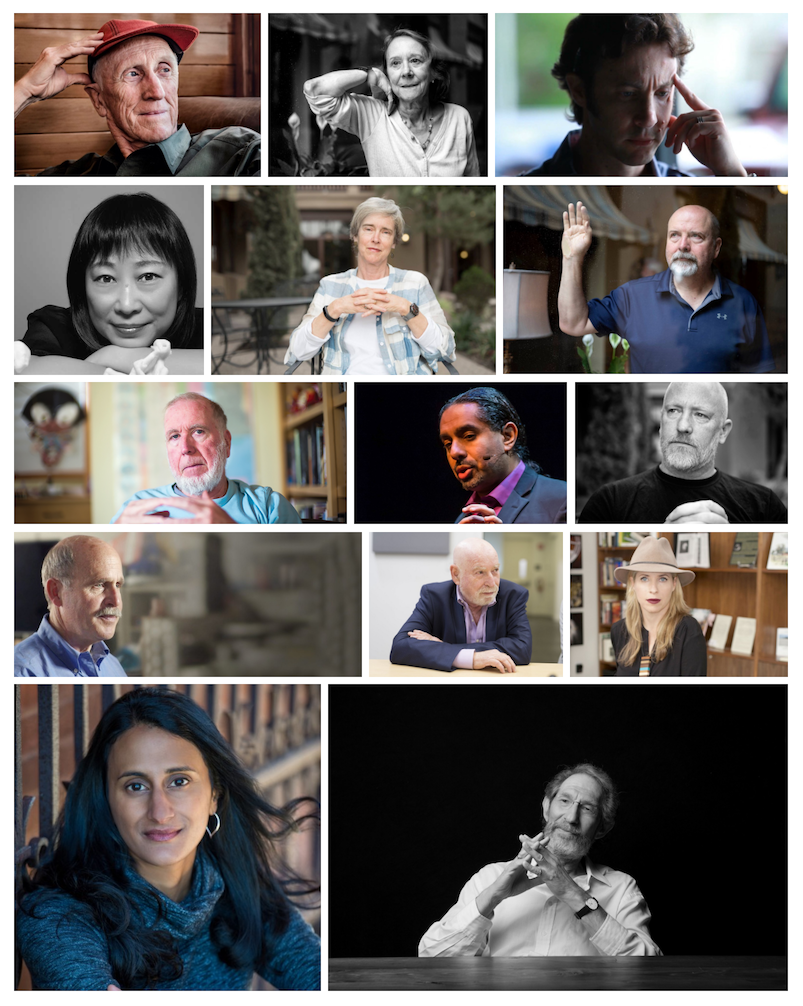
By: The Posts Author | Posted on: 27 May 20
Long Conversation speakers (from top left): Stewart Brand, Esther Dyson, David Eagleman, Ping fu, Katherine Fulton, Danny Hillis, Kevin Kelly, Ramez Naam, Alexander Rose, Paul Saffo, Peter Schwartz, Tiffany Shlain, Bina Venkataraman, and Geoffrey West.On April 14th, 02020, The Long Now Foundation convened a Long Conversation¹ featuring members of our board and invited speakers. Over almost five hours of spirited discussion, participants reflected on the current moment, how it fits into our deeper future, and how we can address threats to civilization that are rare but ultimately predictable. The following are excerpts from the conversation, edited and condensed for clarity. Stewart
Long Conversation speakers (from top left): Stewart Brand, Esther Dyson, David Eagleman, Ping fu, Katherine Fulton, Danny Hillis, Kevin Kelly, Ramez Naam, Alexander Rose, Paul Saffo, Peter Schwartz, Tiffany Shlain, Bina Venkataraman, and Geoffrey West.On April 14th, 02020, The Long Now Foundation convened a Long Conversation¹ featuring members of our board and invited speakers. Over almost five hours of spirited discussion,

By: The Posts Author | Posted on: 21 May 19
A History of Land Art in the American West, Part IIISource: The Center for Land Use Interpretation.As installation begins at the Texas site for Long Now’s monumental 10,000 Year Clock, it’s worth taking a step back to examine the Clock’s larger artistic context and its place in the history of Land Art in the American West.Long Now’s staff and many of the individuals working on the project and serving on our board have drawn inspiration for the 10,000 Year Clock, and its placement in the remote landscape of West Texas, from these Land Artists and their great works.In Part I of our exploration
A History of Land Art in the American West, Part IIISource: The Center for Land Use Interpretation.As installation begins at the Texas site for Long Now’s monumental 10,000 Year Clock, it’s worth taking a step back to examine the Clock’s larger artistic context and its place in the history of Land Art in the American West.Long Now’s staff and many of the

By: The Posts Author | Posted on: 29 Apr 19
There are reasons to be hopeful after the fire.East facade of Notre Dame in the 1860s.In the hours after news broke that the Cathedral of Notre Dame suffered extensive fire damage, many found hope in a story that circulated on social media about a centuries-old protocol the fire department in Paris followed when battling the fire. The story originated with Twitter user Michael Slavitch, who claimed that firefighters prioritized saving the people and relics over preserving the wooden roof structure of Notre Dame because they knew that the materials needed to rebuild it lay waiting in the Palace of Versailles. After the
There are reasons to be hopeful after the fire.East facade of Notre Dame in the 1860s.In the hours after news broke that the Cathedral of Notre Dame suffered extensive fire damage, many found hope in a story that circulated on social media about a centuries-old protocol the fire department in Paris followed when battling the fire. The story originated with Twitter user

By: The Posts Author | Posted on: 5 Feb 19
Glass vials containing dried B. subtilis spores (R. Möller and C. S. Cockell)Last week, The Atlantic‘s Sarah Zhang profiled a University of Edinburgh science experiment that began in 02014 and — if everything goes according to plan — will conclude in 02514.The experiment is studying the longevity of bacteria, which can remain viable well past the lifespan of humans.Physically, the 500-year experiment consists of 800 simple glass vials containing either Chroococcidiopsis or another bacterium, Bacillus subtilis. The glass vials have been hermetically sealed with a flame. Half are shielded with lead, to protect them from the radiation of radon or cosmic rays, which can cause DNA damage.
Glass vials containing dried B. subtilis spores (R. Möller and C. S. Cockell)Last week, The Atlantic‘s Sarah Zhang profiled a University of Edinburgh science experiment that began in 02014 and — if everything goes according to plan — will conclude in 02514.The experiment is studying the longevity of bacteria, which can remain viable well past the lifespan of humans.Physically, the 500-year experiment consists of 800 simple glass
- 1
- 2







